Imagine your first visit to a major city: Copenhagen, Sydney, Tokyo — I’ll choose Paris. You rent a small apartment on Rue Lepic. When you walk the arcades near Le Louvre, the women seem younger and certainly better put together than you. You might stop for a tagine or even street food: a cheese crêpe. The city is enchanting, and you wonder: could you buy a small place and live here? And would the city retain its magic?
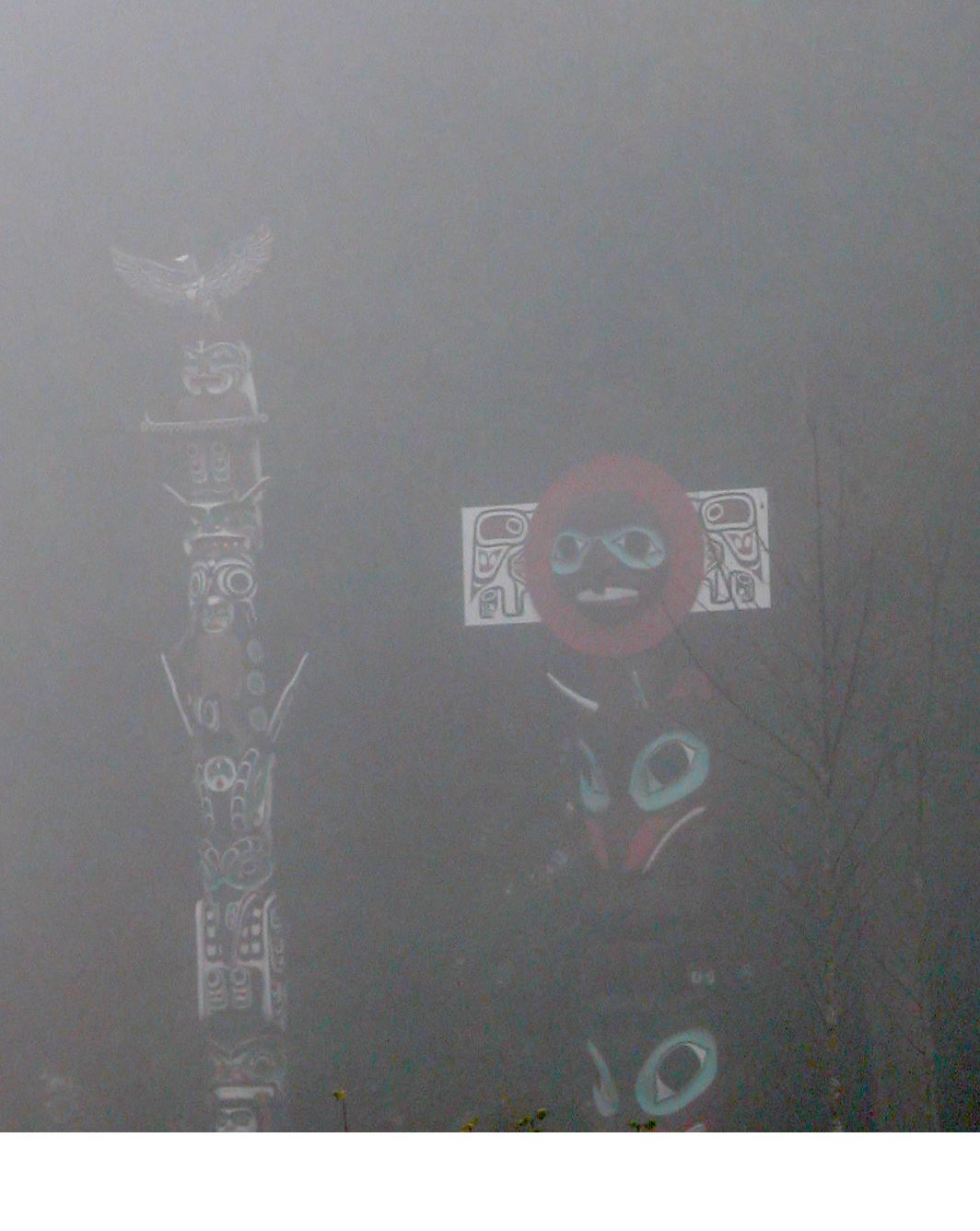
The city that held me under a spell for two decades was not Paris, but Vancouver, in the Pacific North West. PNW is very roughly bounded by the cities of Portland Oregon in the south, Seattle Washington (WA) and Vancouver British Columbia (BC) in the middle, and Anchorage Alaska in the very north. PNW is, it happens, where Art Wolfe grew up and makes his home.
How did my enchantment turn out? I’ll start at the beginning.
“The most vile, thicke and stinking fogges… the raine which fell, was an un-natural congealed and frozen substance“
—Sir Francis Drake, The World Encompassed, 1628
It’s all geography: From Tierra del Fuego in South America to Alaska in North, the west continental coasts are bounded by mountains, thrust up from collision of continental plates.
These ranges form a natural barrier to Pacific rains; the water drains into the coastal seas, washing down nutrients and supporting a fertile marine ecosystem. This, in turn, brought First Nations peoples to the coasts as early as 13,000 years before the present. The First Nations author Chenoa Egawa wrote:
“These waters are our waters… their power and turbulence are reflected in our sprits. It is still one of the most beautiful and culturally compelling places on the planet“
— Inside Passage, 2005
The water was their ecosystem: food, transportation and art. On a clear day with calm waters and the right light, the waters look like this:
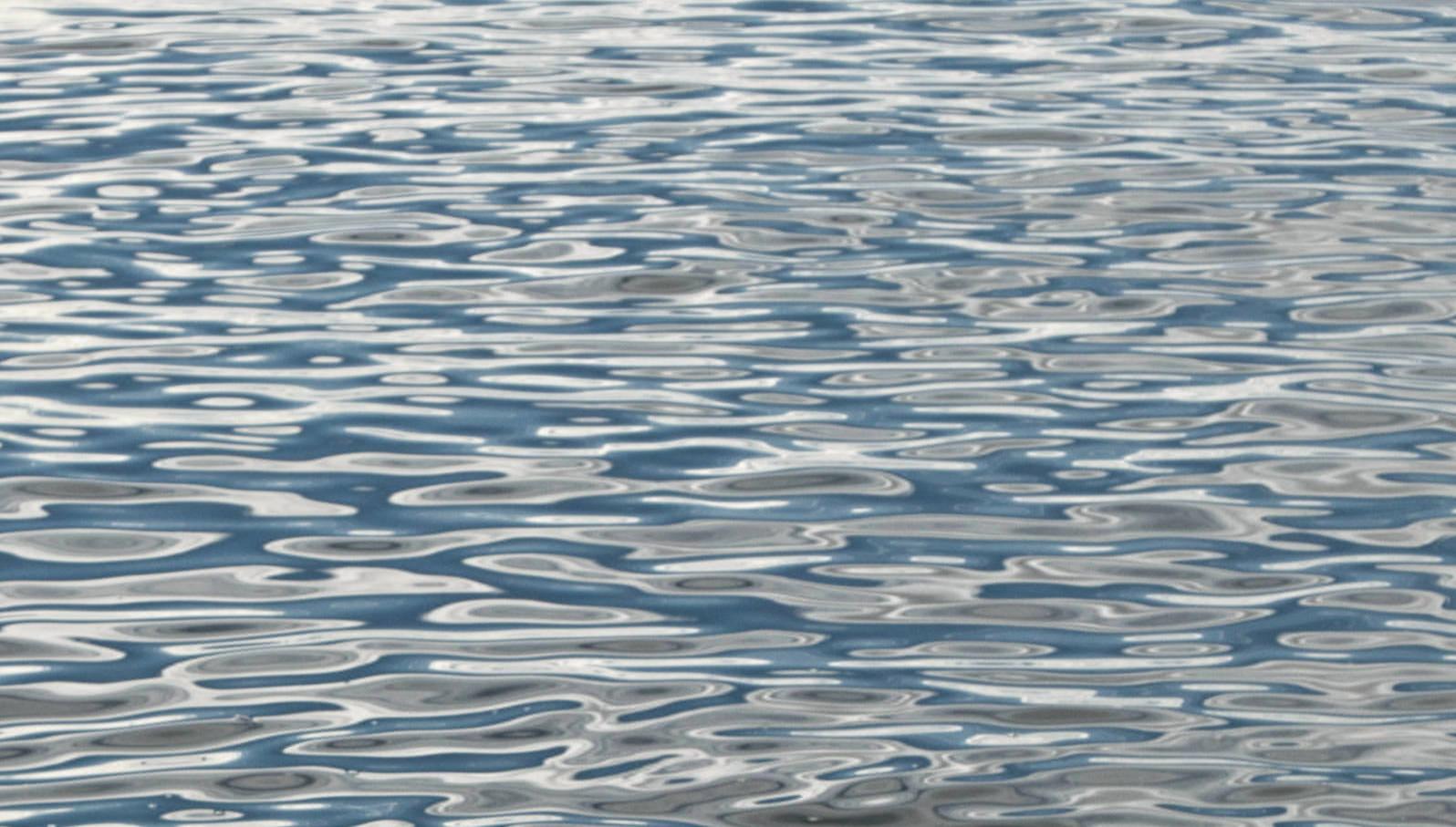
I wear jewellery with the same patterns; below, it appears in a wood carving:
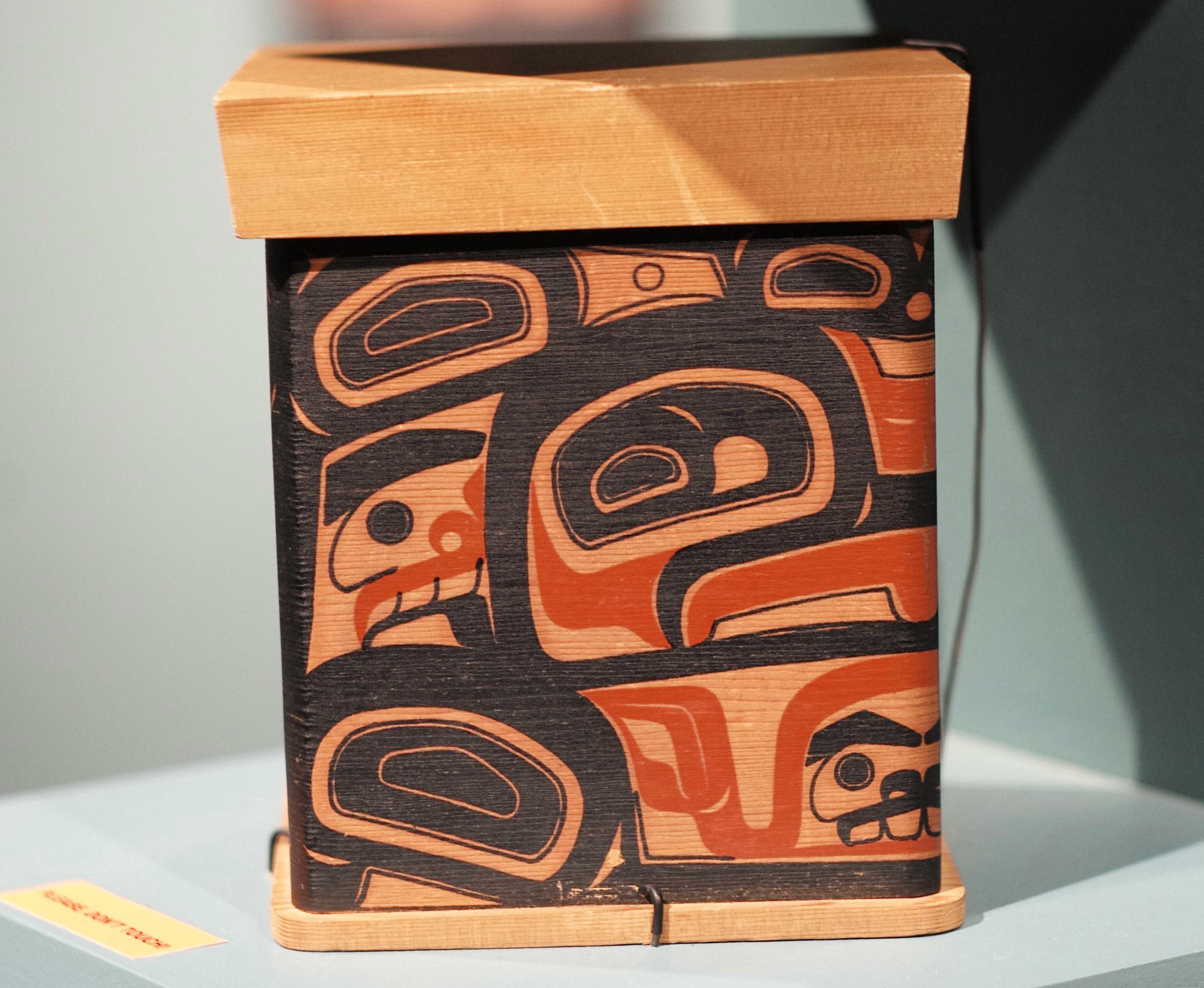
First Nations farmed the coastal seas, creating shoals for shellfish, diverting salmon to new streams, and building rock weirs to trap fish. Many structures survive and still provide food.
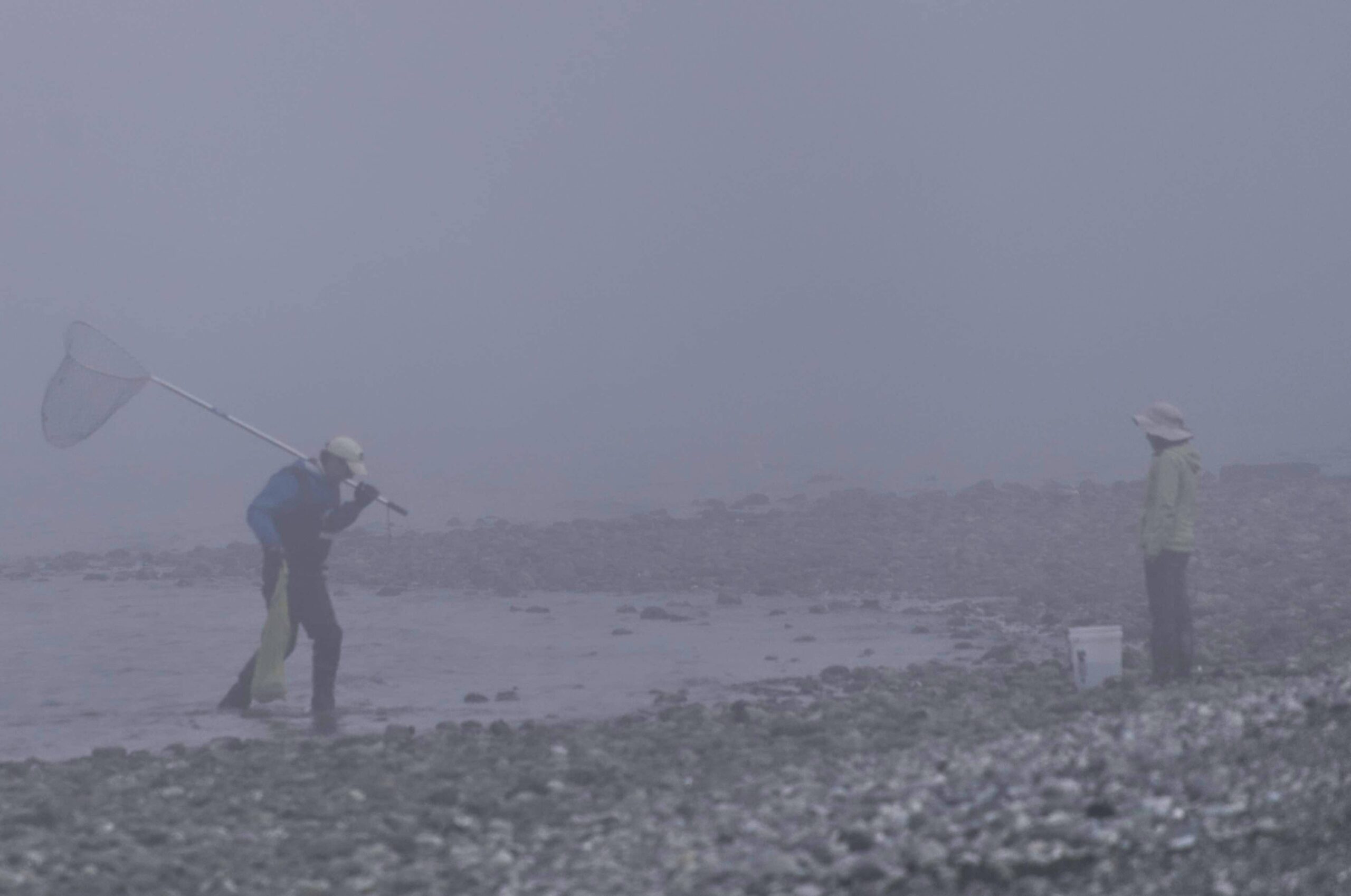
It isn’t quite as it looks: while he’s collecting mussels, clams and oysters, she’s gathered edible seaweeds. The harvest, they said, was exceptionally good that day. Fog-bound, though.
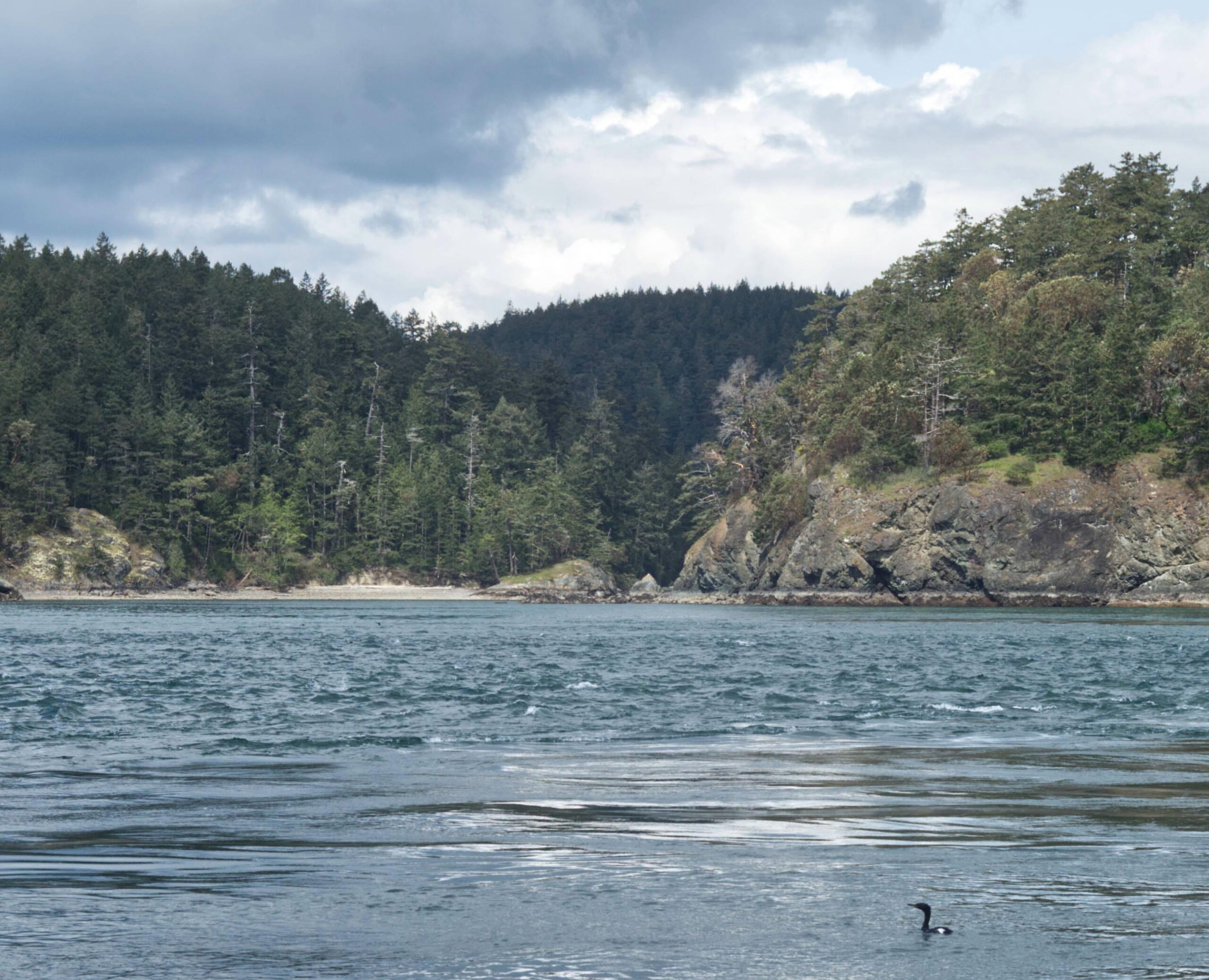
High tide, swift and treacherous. The pass was named by the British navigator George Vancouver, who hoped it led to the mainland (as it turned out, just more bays).
He and early explorers endured cold, rain and fog to find a ‘Northwest Passage’ from the Atlantic to the Pacific oceans. The search ended after Vancouver’s expeditions.
In an incredible feat of seamanship and endurance, Vancouver and his crew mapped every inlet, island and bay, demonstrating all led to the mainland. No passage.
It ought to have led to advancement in rank, but that foundered when Vancouver flogged one of his crew, an able seaman by the name of Tom Pitt.
What Vancouver didn’t know was that Pitt, a reprobate by all accounts, was a cousin of British Prime Minister William Pitt the Younger. Two years later, he became the second Baron Camelford and harboured flogging-induced resentment against Vancouver.
After his return to London in 1795, Vancouver was treated badly by William Pitt and by Thomas Pitt’s allies. Thomas Pitt even assaulted Vancouver in public. In his drawing, “The Caneing in Conduit Street” (1796), James Gillray caricatured Thomas Pitt’s street corner assault on George Vancouver.
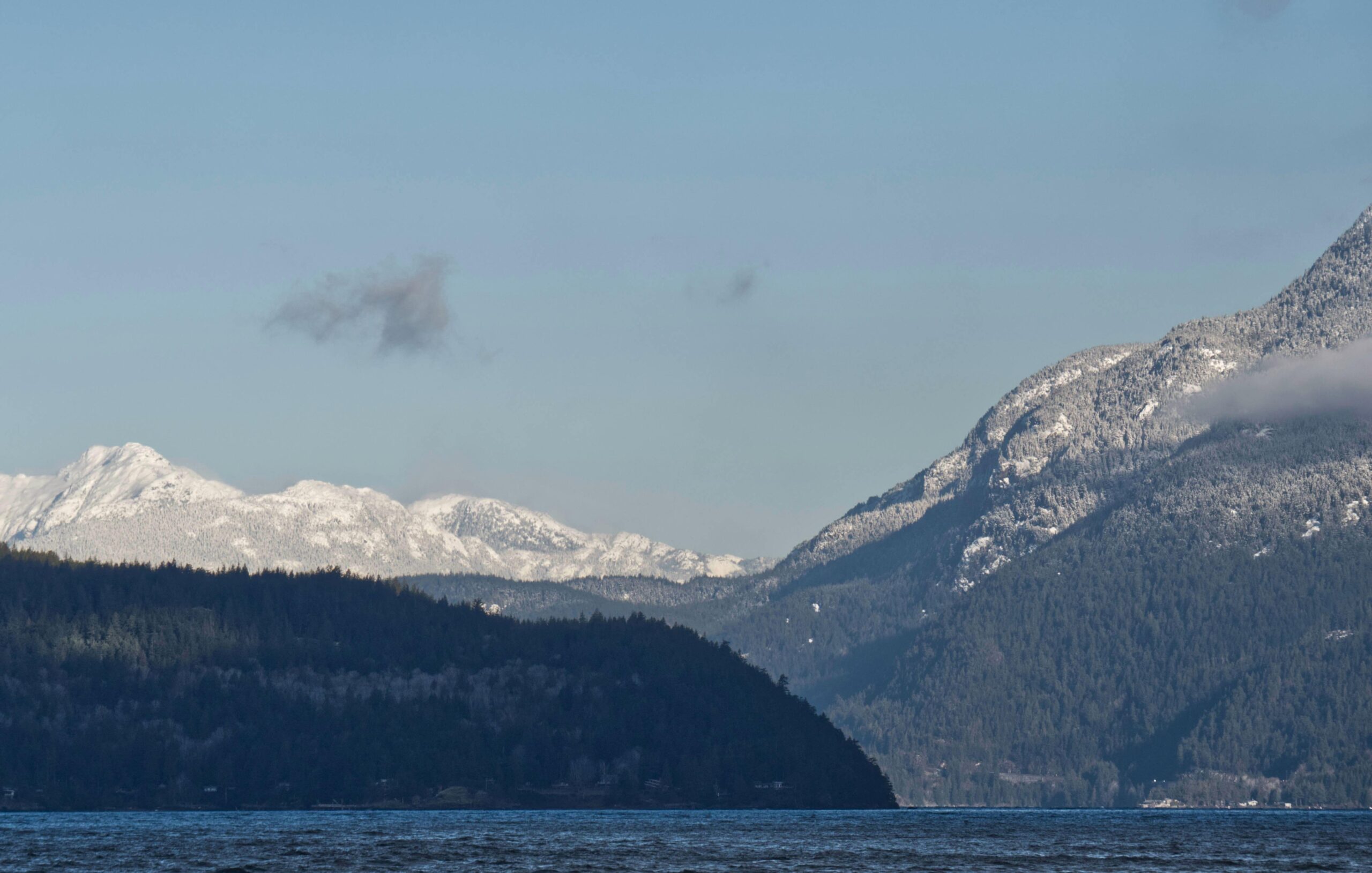
The ship’s surgeon, Lt. Menzies, wrote, “the softer beauties of the landscape are harmoniously blended in majestic grandeur with the wild and romantic.” Vancouver had little use for this sentimentality:
“the abundant fertility that unassisted nature puts forth, require only to be enriched by the industry of man with villages, mansions, cottages and other buildings, to render it the most lovely country that can be imagined.”
— Journal, 1792
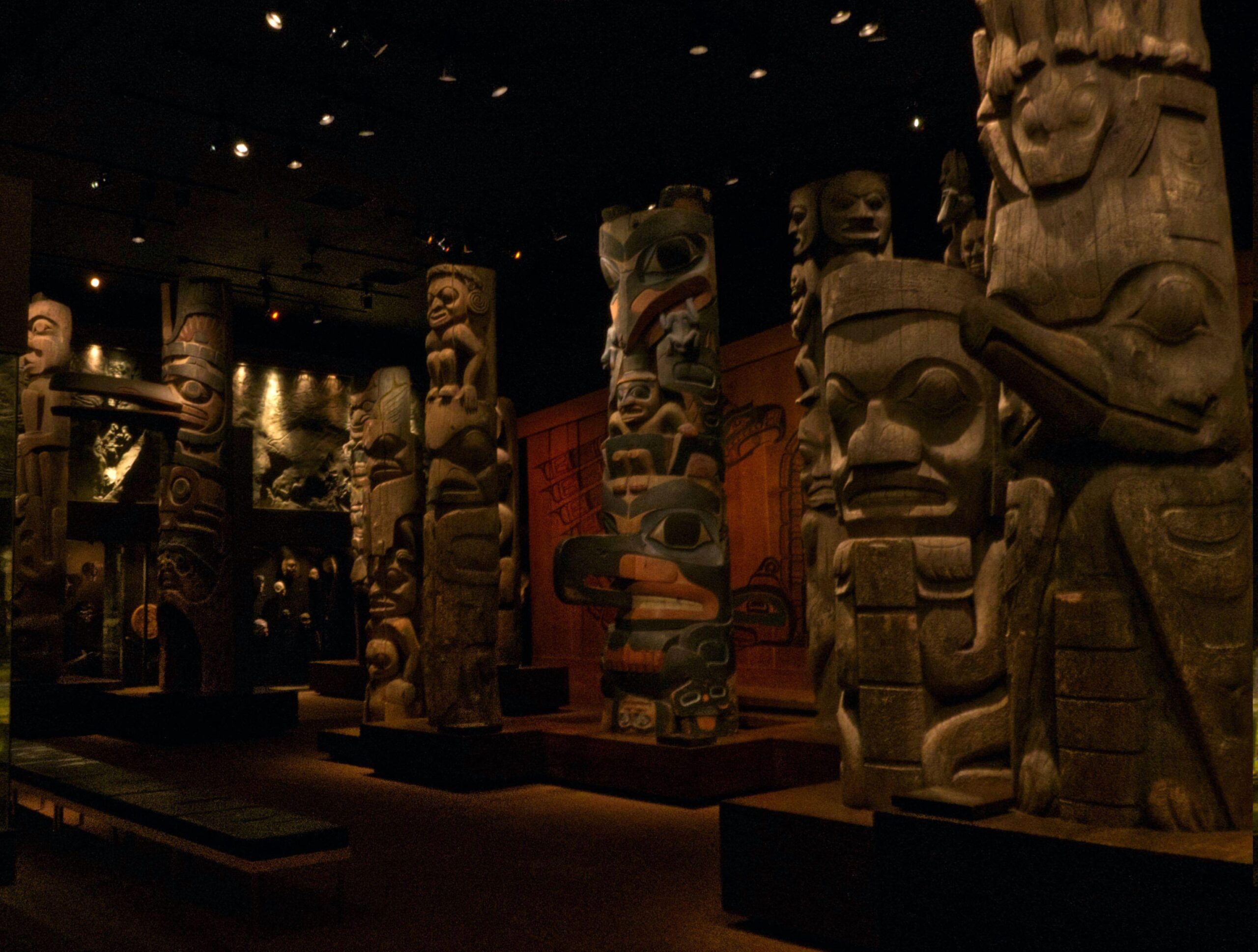
Vancouver’s vision prevailed. First Nations peoples had traded with each other up and down the coast for millennia; Europeans were easy pickings for sharp native traders. But smallpox decimated the coastal peoples; they had no immunity, and vaccination was generally reserved for non-natives. In some cultures, as many as 90% died, and their culture died with them. We know it today only through museums. Chief Sealth (namesake of Seattle) spoke these prescient words:
And when the last Red Man shall have perished, and the memory of my tribe shall have become a myth among the White Men, these shores will swarm with the invisible dead of my tribe, and when your children’s children think themselves alone in the field, the store, the shop, upon the highway, or in the silence of the pathless woods, they will not be alone.
And today? Our favourite brewery in Vancouver carries this statement: “Strange Fellows Brewing acknowledges that we occupy and benefit from the unceded lands of the Tsleil Waututh, Squamish and Musqueam nations.“ Honouring those who were here before me: this article was written on the unceded lands of the Lummi Nation.
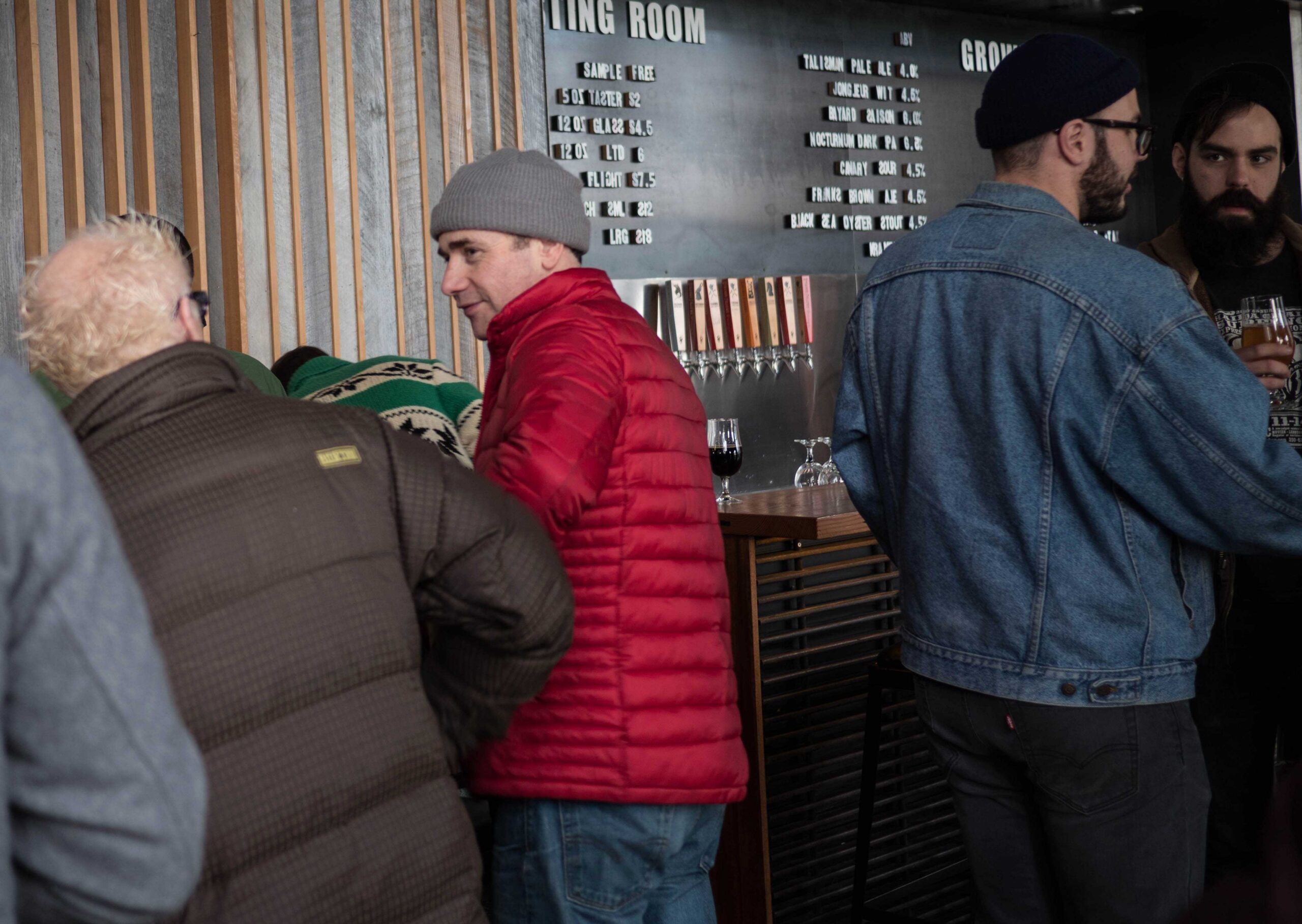
The Canadian and American craft brew movements started along the Pacific coast. Here, every month or so, the local craft brewers hire a bus and sample each other’s work. Iain from Strange Fellows, in red in the picture above.
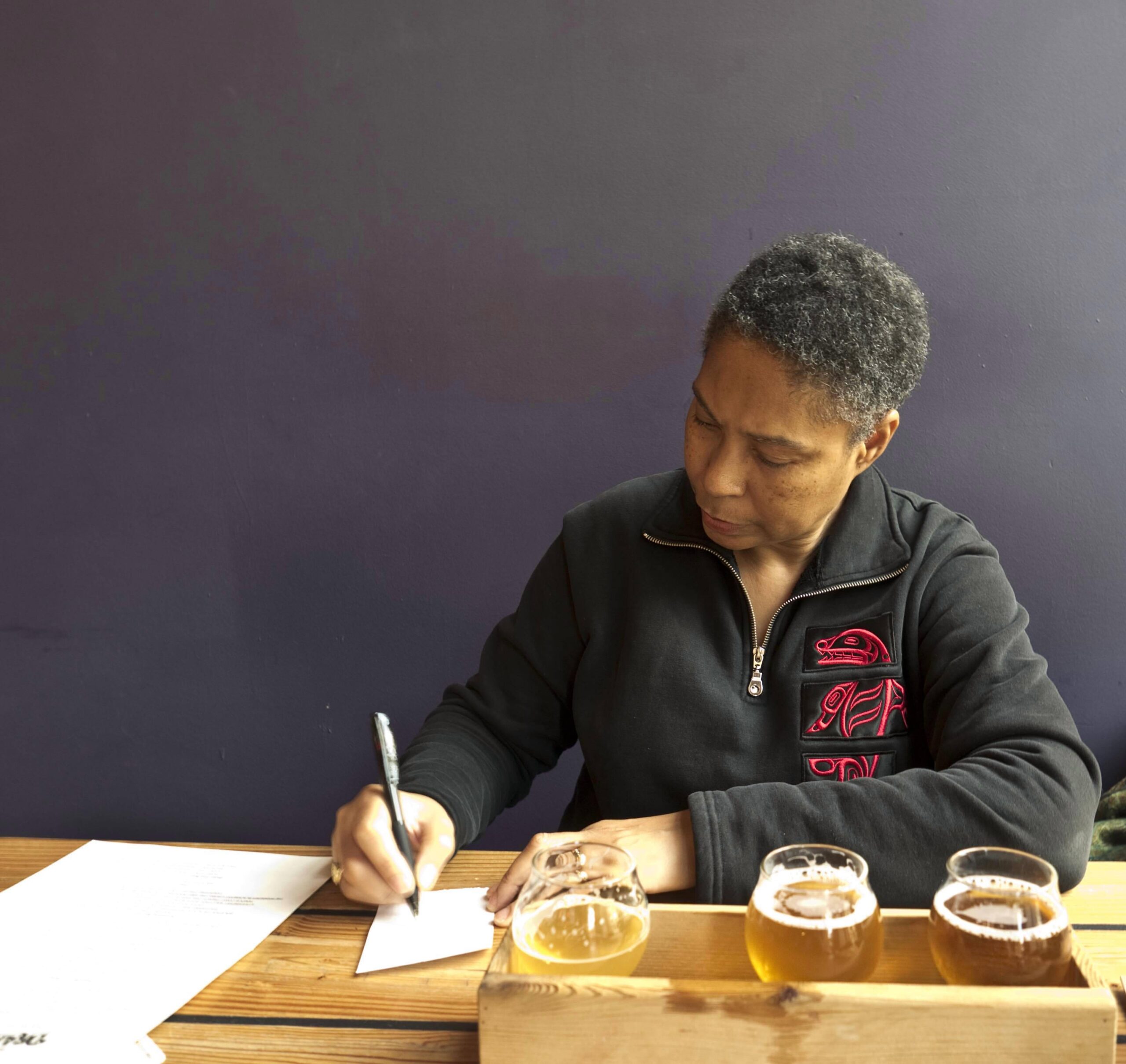
Obligatory gratuitous photo of Spouse at the Drake in Victoria (provincial capital). These institutions are part of the spell. We can stop in a pub, find our snug, while away an hour or so over a few pints or a tasting flight. Public transportation is so readily available that we don’t have to worry about designated drivers. This one enticed us with pub grub featuring roast sweet potatoes with cranberries and walnuts. Also, it’s that rare place where adults can have quiet conversations over a pint.
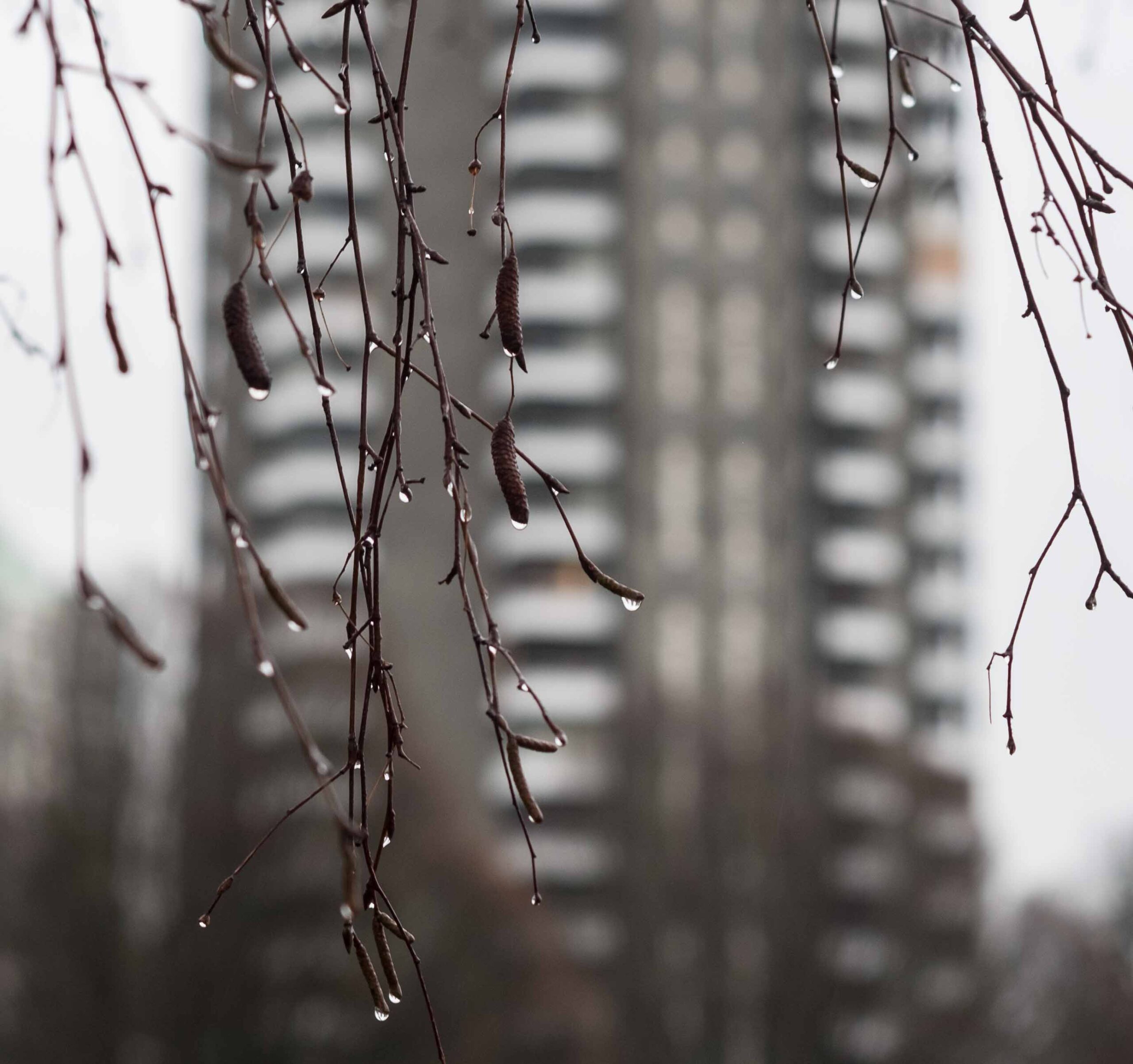
How much of historical PNW remains? Today’s coast is largely condo rather than rainforest, a transition assisted by the flight of people and funds from Hong Kong. Away from the billion-dollar developments, a large portion of the coast surrounding central Vancouver is beach or walkable seawall: a place for performance, wildlife and children.
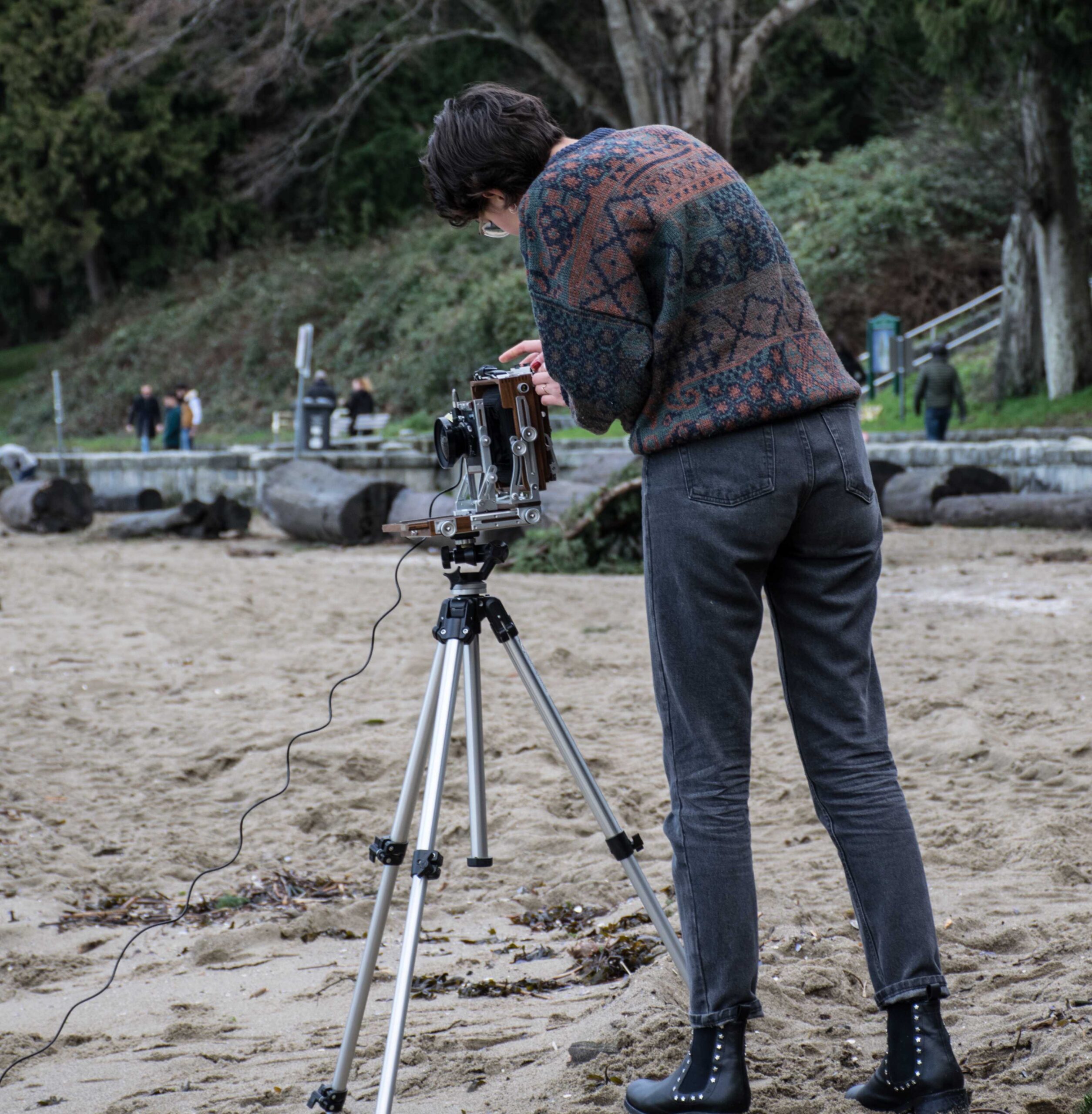
I didn’t want to interrupt the selfie, part of her portfolio at Uni. We talked afterwards; she laughed when I told her I’d title it ‘World’s most complicated selfie.’ The camera belongs to her school, and she hoped to own one like it someday. Though, glancing at the Leica, she thought that might be nice too.
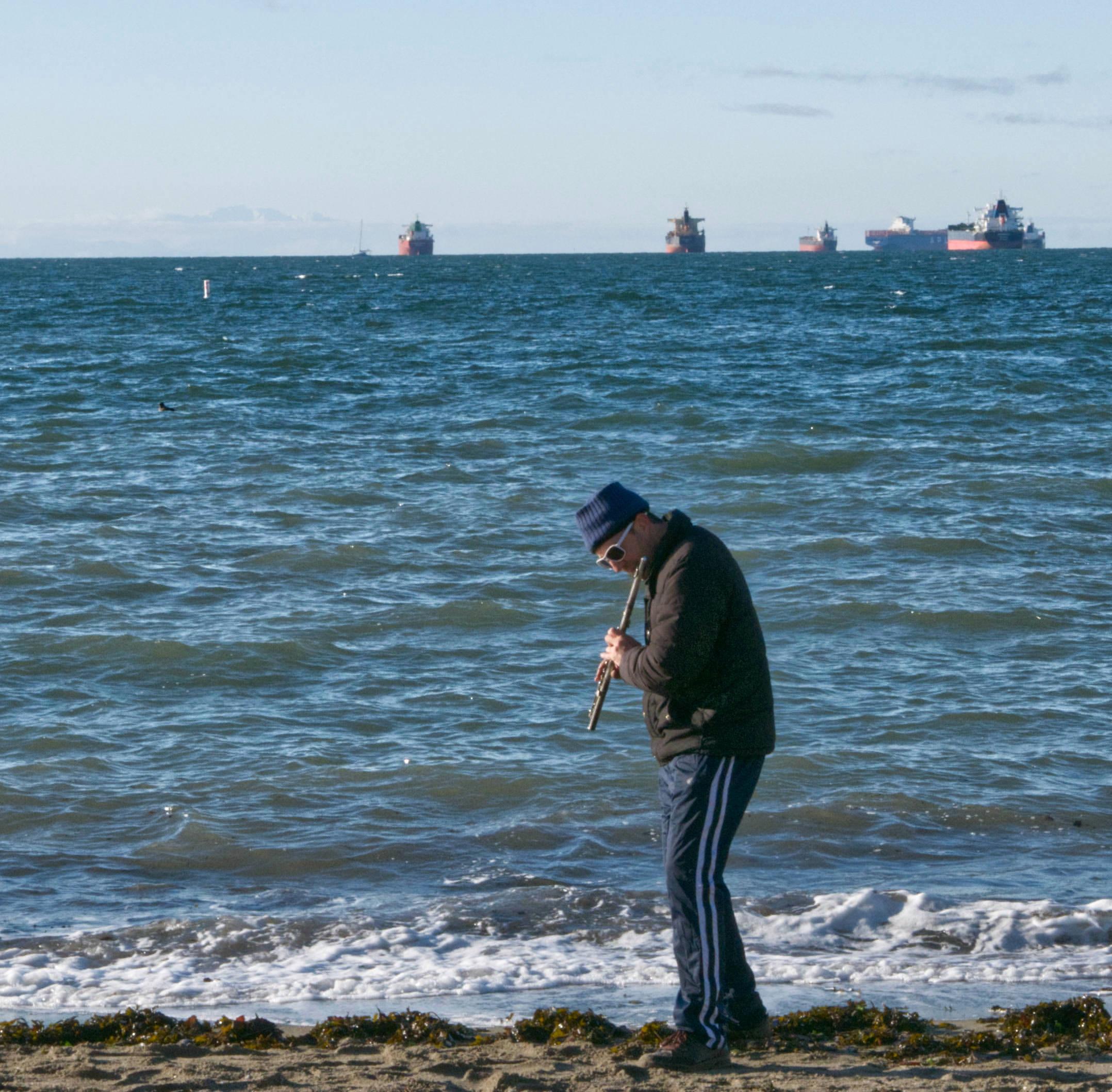
No Pied Piper; the ships are waiting to enter Vancouver Harbour, a major Pacific port. from the beginning, the city dealt with multiple identities of port, park, playground and nature preserve.
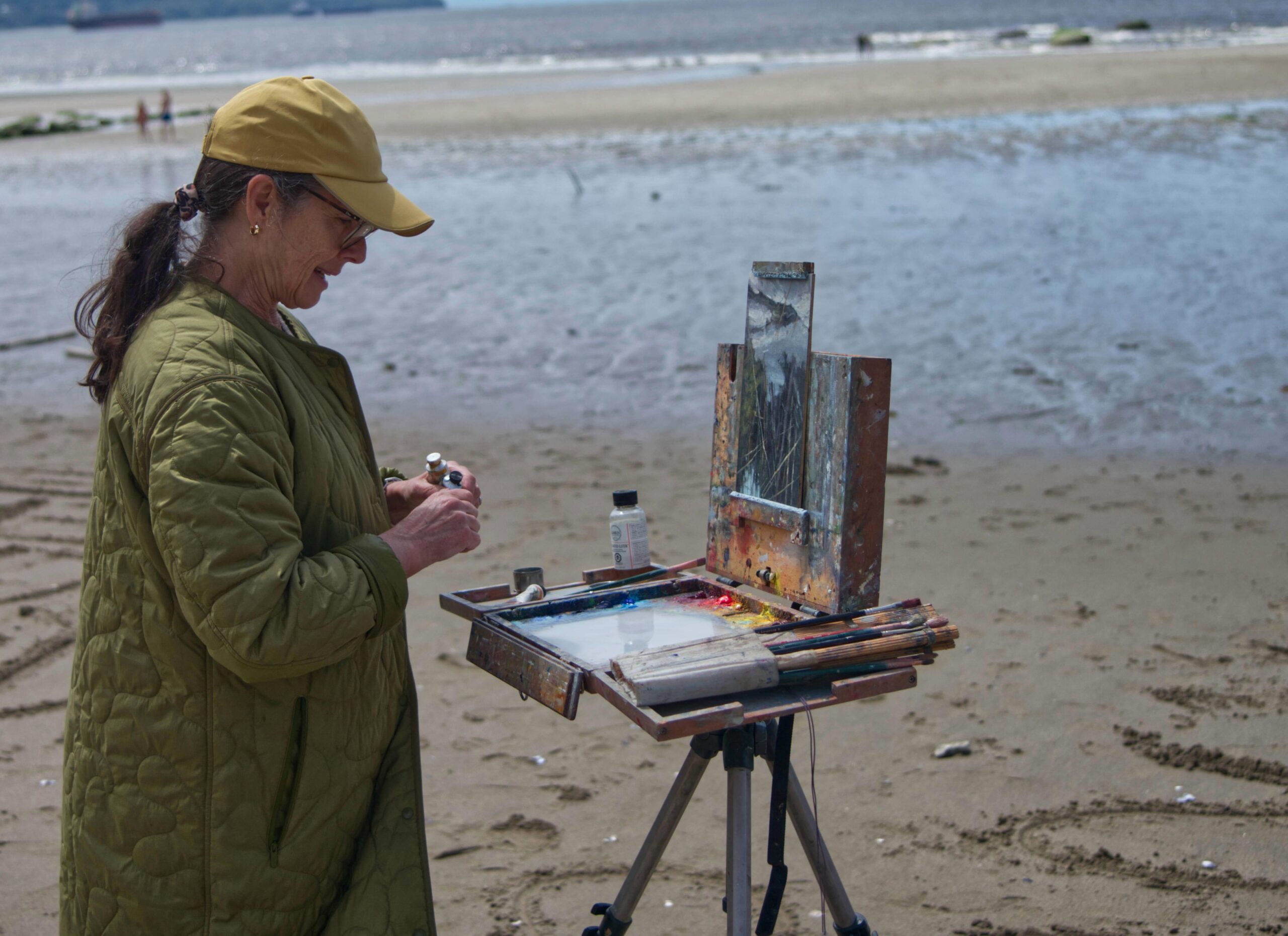
Our neighbour down the street is an artist; while I’m out clearing the forest, she stops to explain ‘plein air’ painting — Monet being her hero. I was happy to come upon this woman sharing the tradition. This artist asked me not to take this painting too seriously: she was redoing it — starting upside-down. Is that an artist thing?
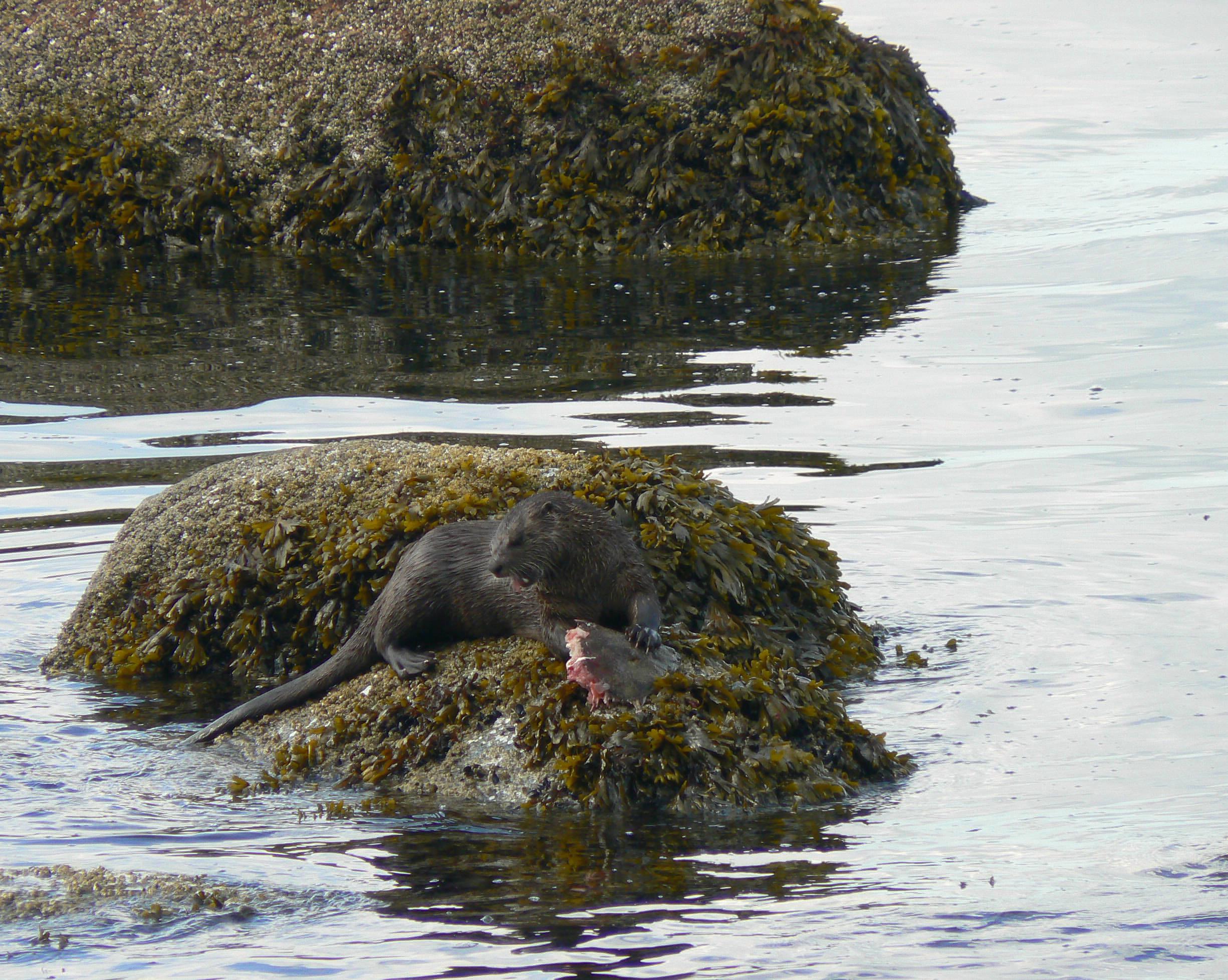
Otters are a gregarious bunch, and it’s great fun to watch them frolic on the beach. It isn’t all fun: one sees seagulls with half a starfish poking out of their gullet, others tearing a crab to bits — shell and all. Just everyday business for them.
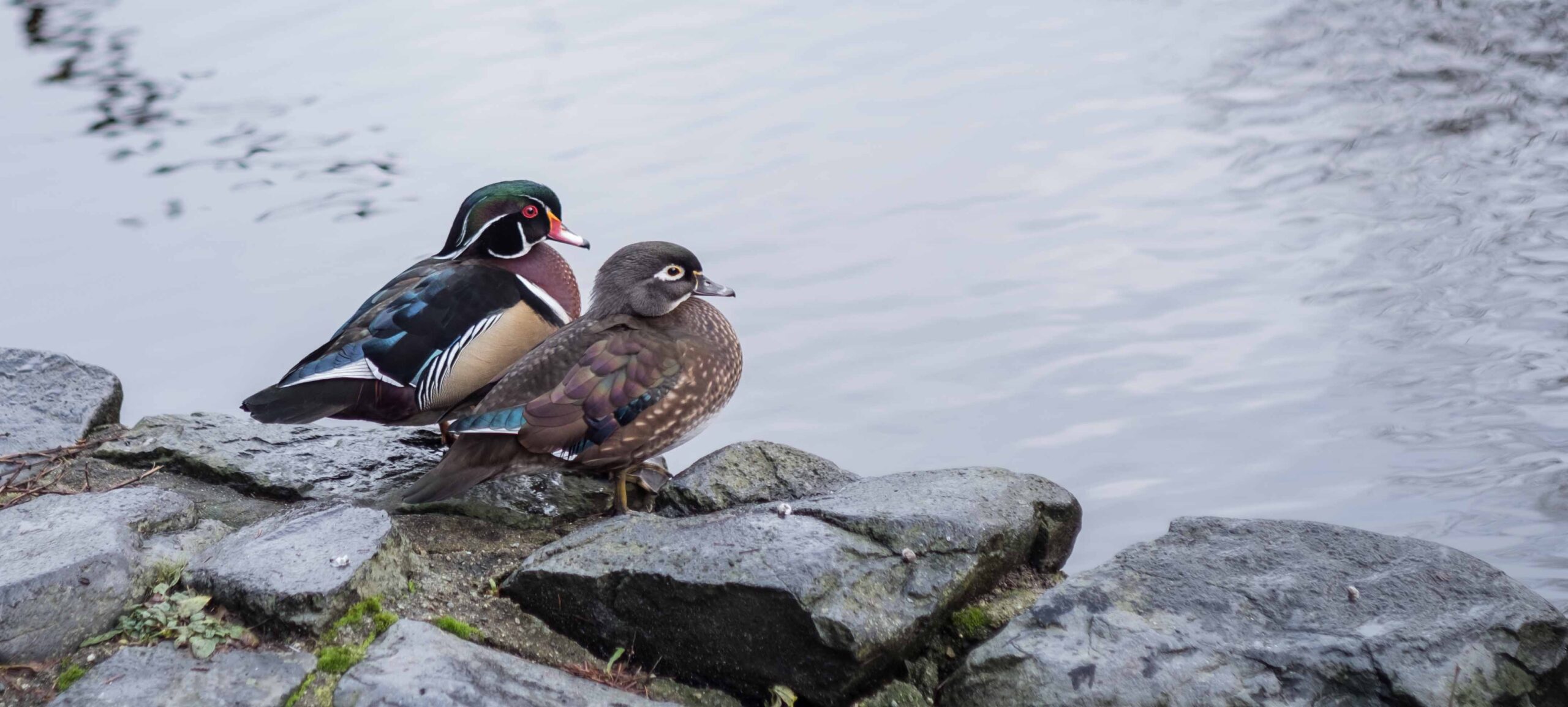
The lagoon and the ocean waters are clean enough that herons, cormorants and seagulls create rookeries offshore. It’s hardly their original ecosystem, but it is viable.
When I moved to PNW, I thought the Leica wasn’t really for nature photography: no long lenses. The product ambassador at Leica Bellevue suggested that before he’d take the M240, I ought to try a few months’ serious photography with it. He was right, and I was wrong. I did compromise: I added an APS-C camera and used Leica lenses on it. The above photo was taken with a Fuji X-E3 and a Leica Elmarit 90. It works, though I prefer a rangefinder.
The coast is also a giant playground.
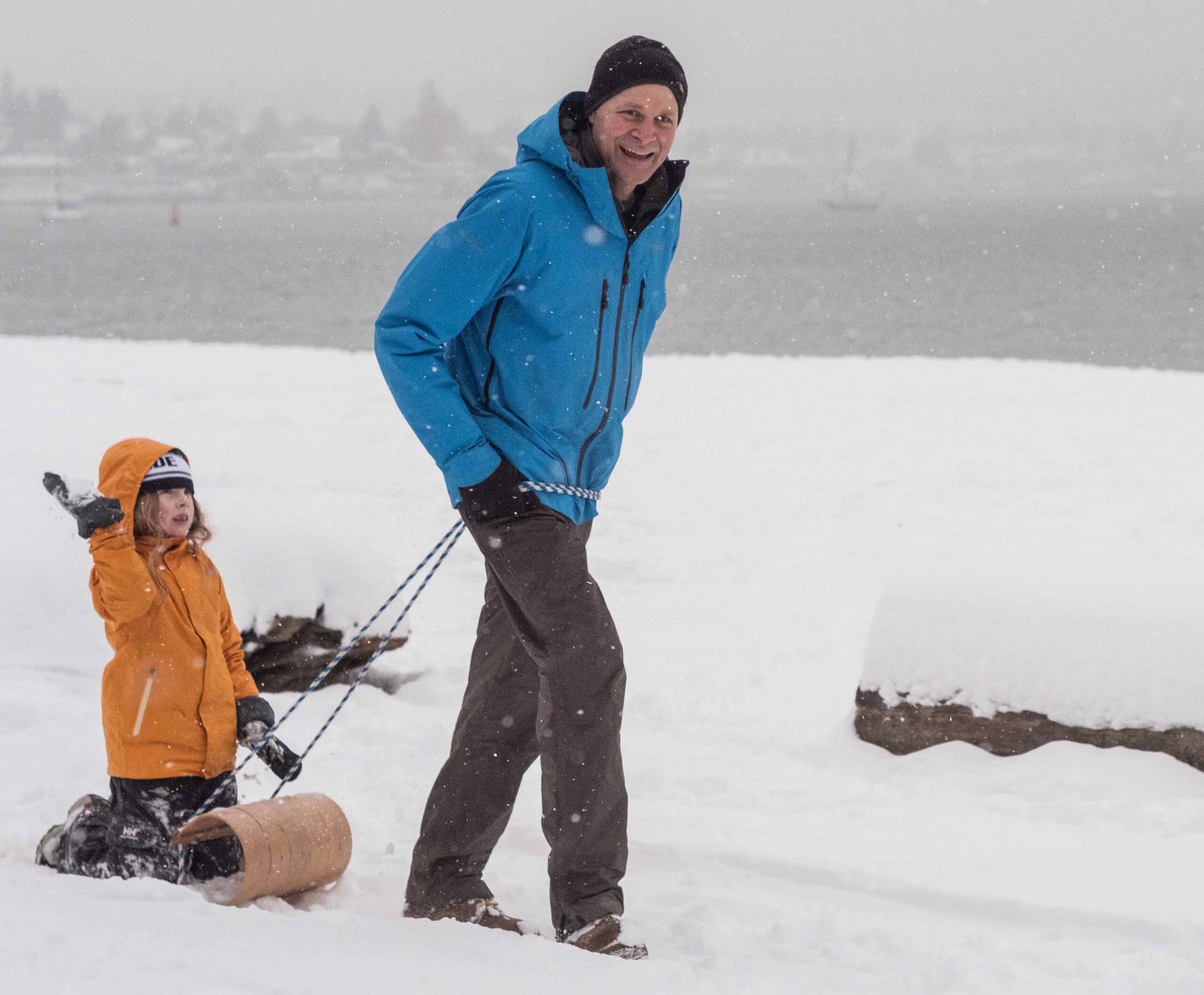
Snow is rare in the coastal rainforest, but when it does happen, businesses shut down, and fathers get quality time hauling daughters about.
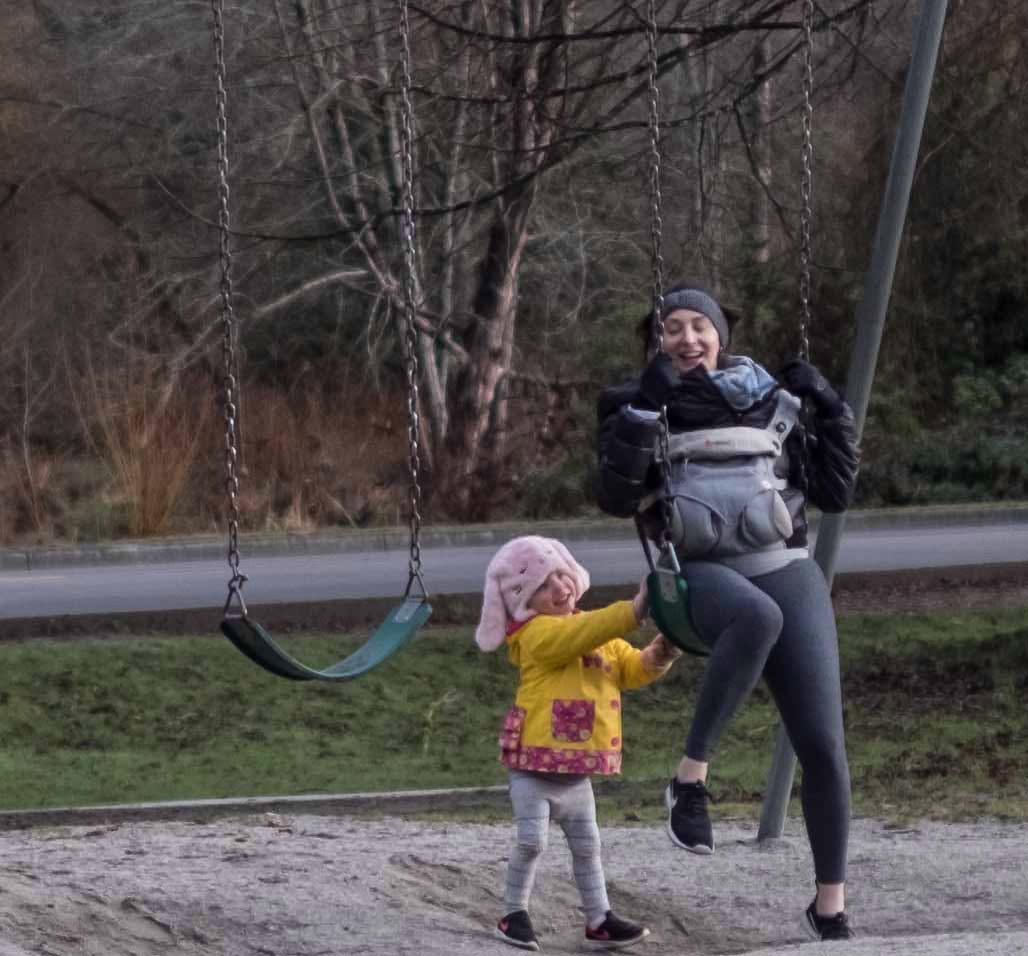
After the photo, the girl wandered up to me and asked, “Are you my grandmother?” Dad explained: grandma also uses a rangefinder. The “G’ word usually upsets me; I don’t feel old. This time though, I felt some odd kind of connection.
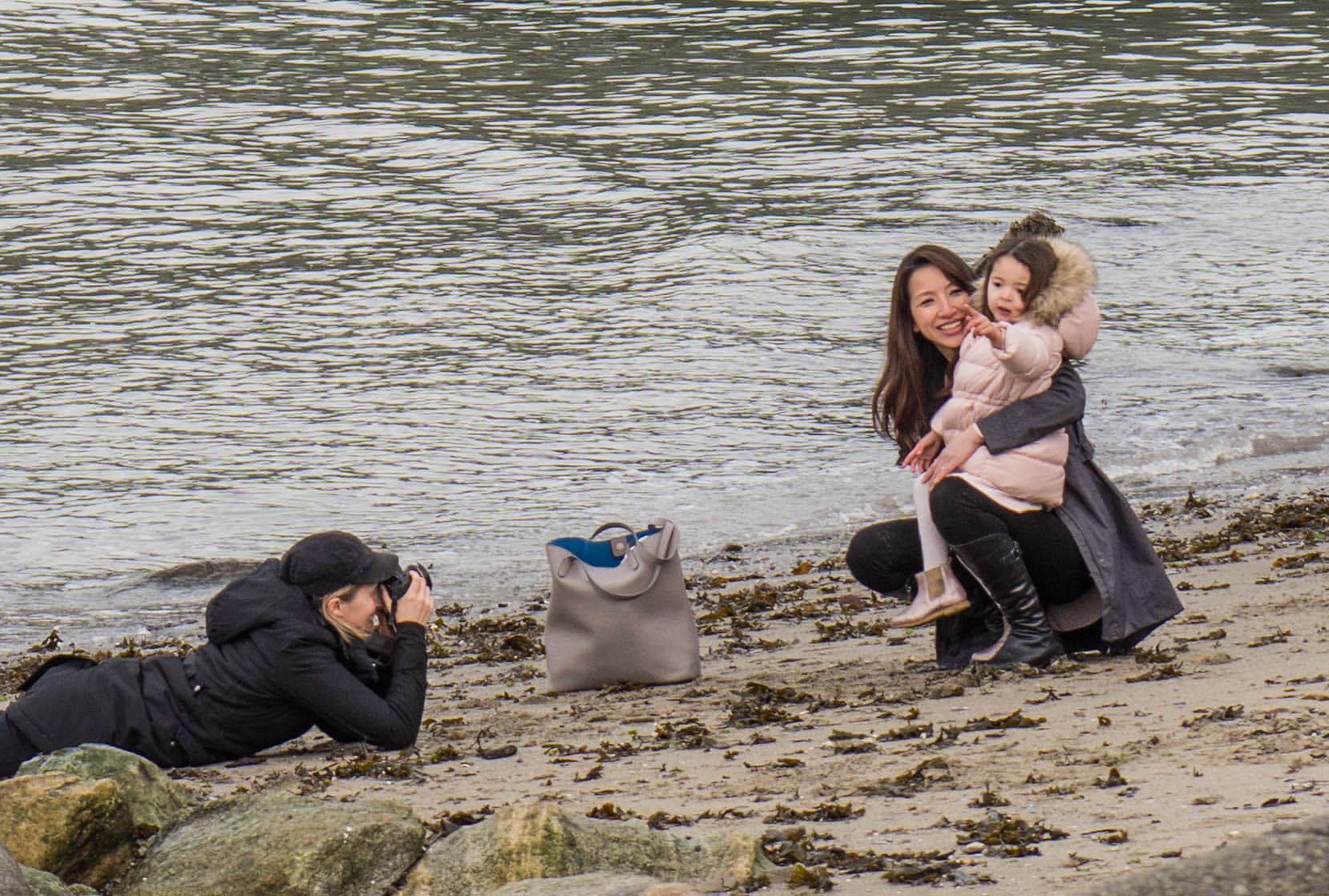
No greater love hath a photographer than to squirm about the sand for a client. On any given day, the beaches will have several professionals with their long white lenses. I’m a bit envious, though certain that kind of photography is better left to Art Wolfe.
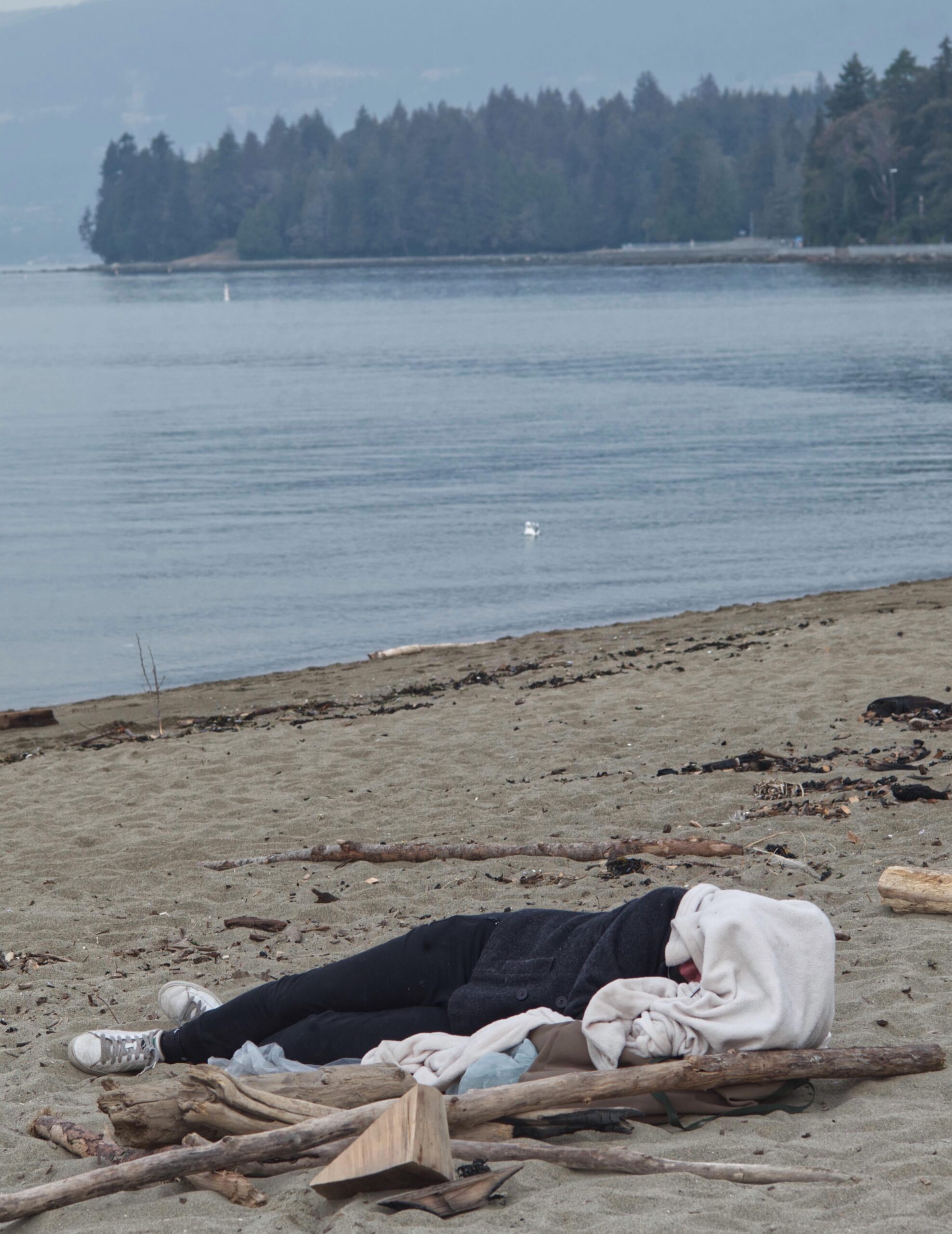
It seems there’s a tradition: young people take their kit and travel across the country, relying on the kindness of strangers. You’ll often see a young couple (and dog) with some clever approach to getting a few dollars.
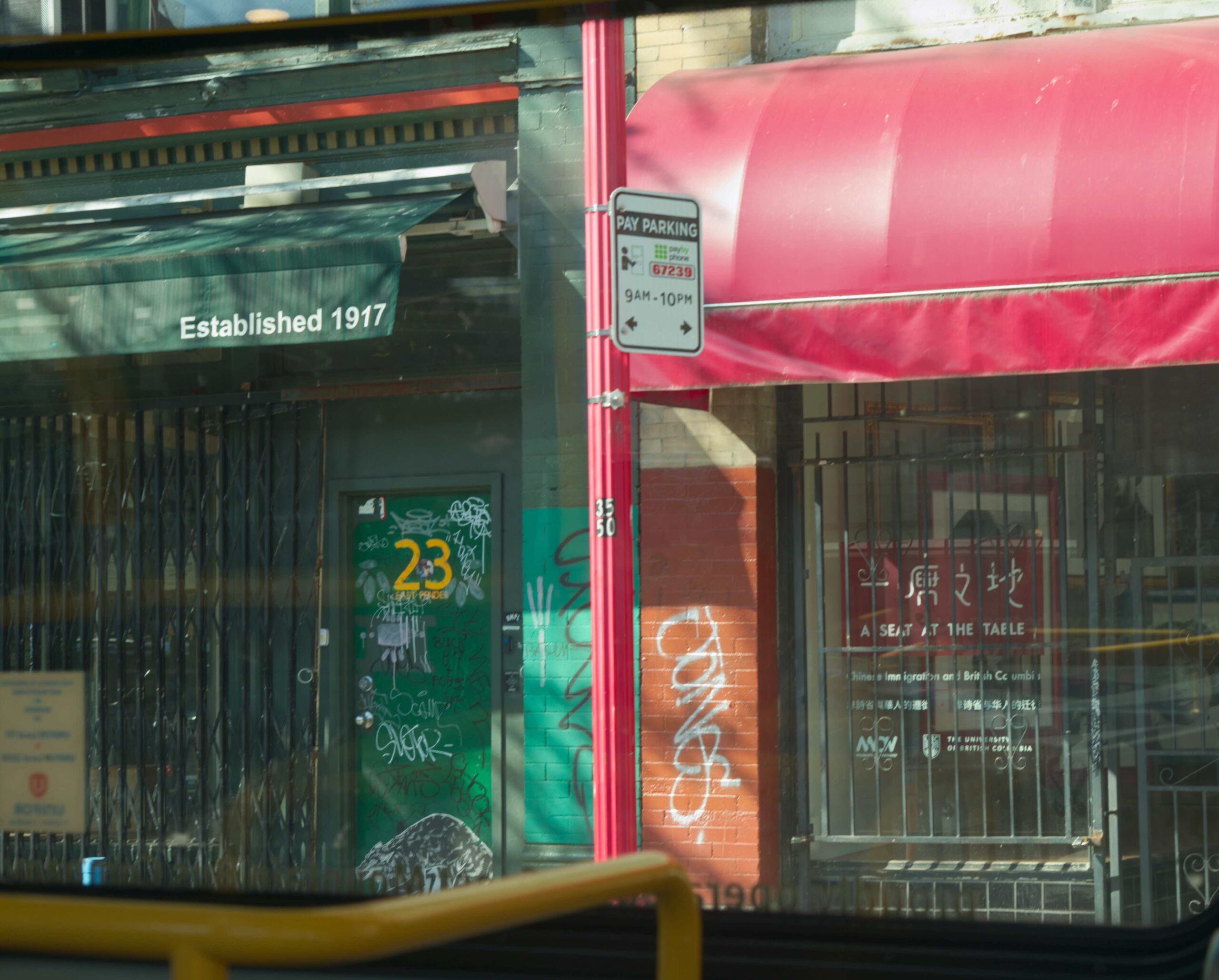
I’ve carefully avoided showing industrial support areas, working-class housing, homeless encampments and the effects of drugs. This isn’t street photography.
In addition to those factors, we realised early on that even owning a condo was beyond our means. We asked the maître d’ of the culinary school how he could afford to live there. “Well, I used to live in London…“
In 2021 I retired from my job in Austin, Texas and moved to a small development/cum nature reserve off coastal Washington.
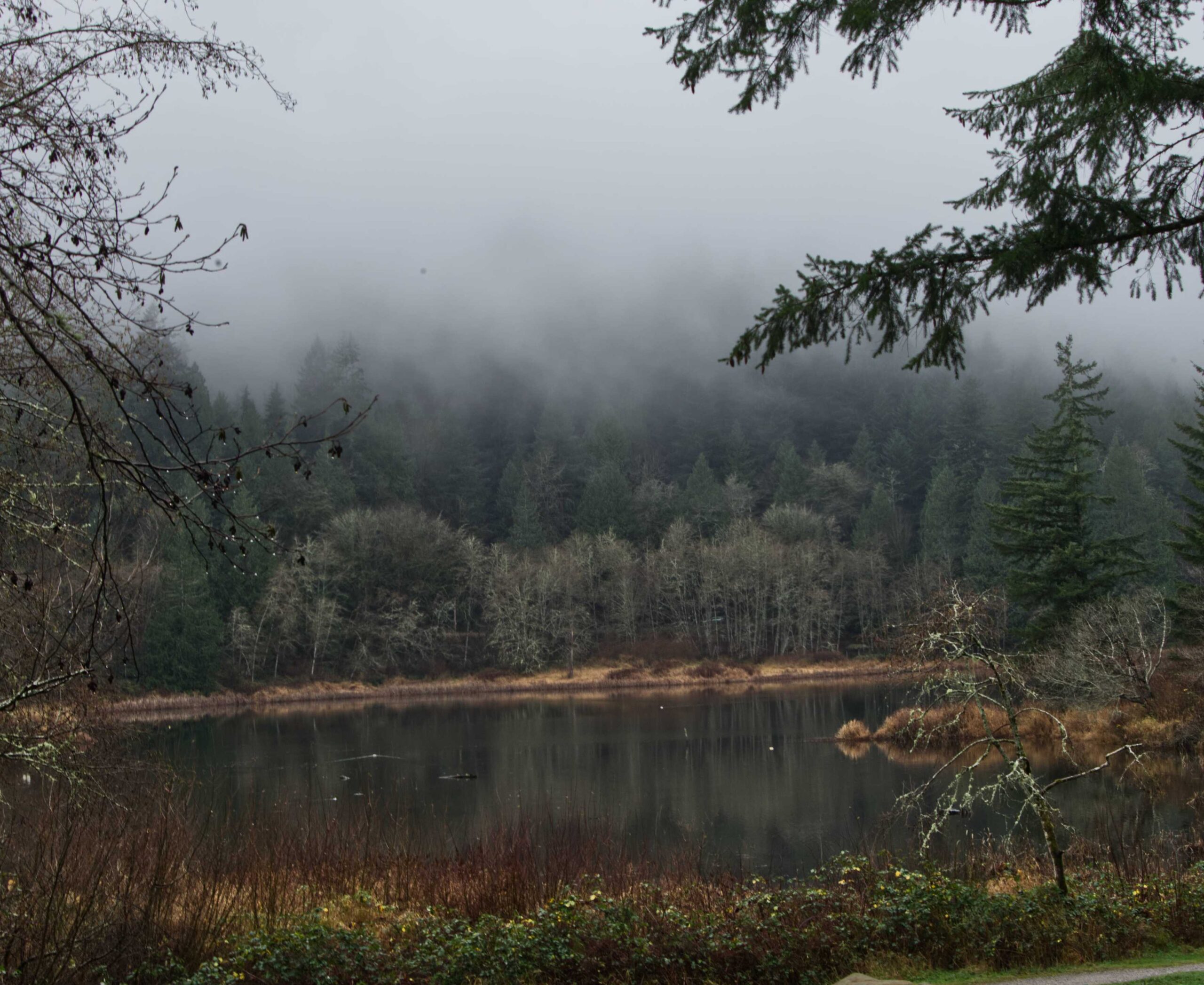
This lake is a five-minute walk, and we have a view from our bedroom deck. It certainly looked idyllic when we bought the house.
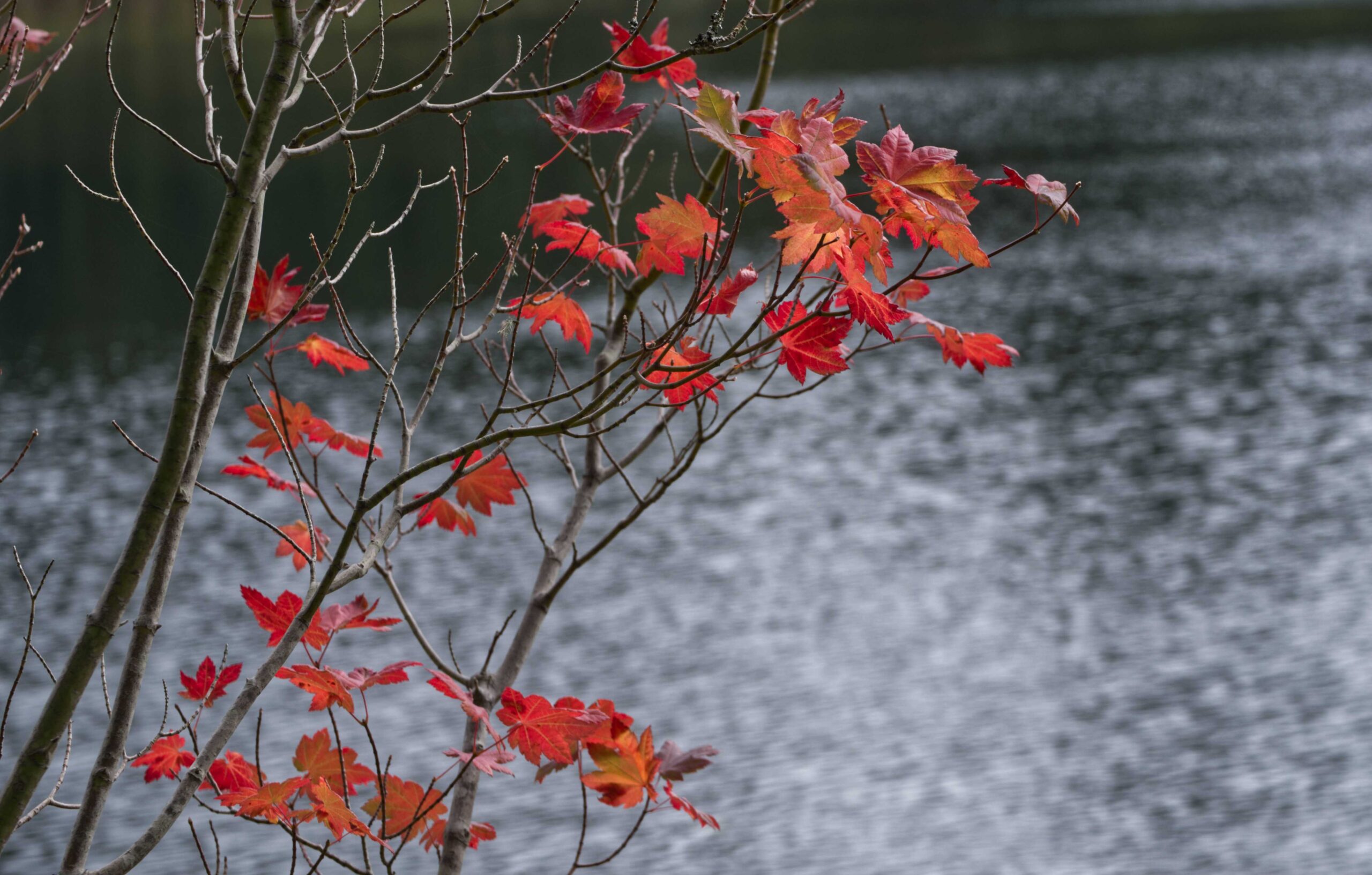
This is how I imagined life in PNW: morning walks along the lake with a camera. If you leave the path, it’s a short walk to a gas station-cum-deli, serving very bearable fish and chips and a selection of local craft beers. What could be better?
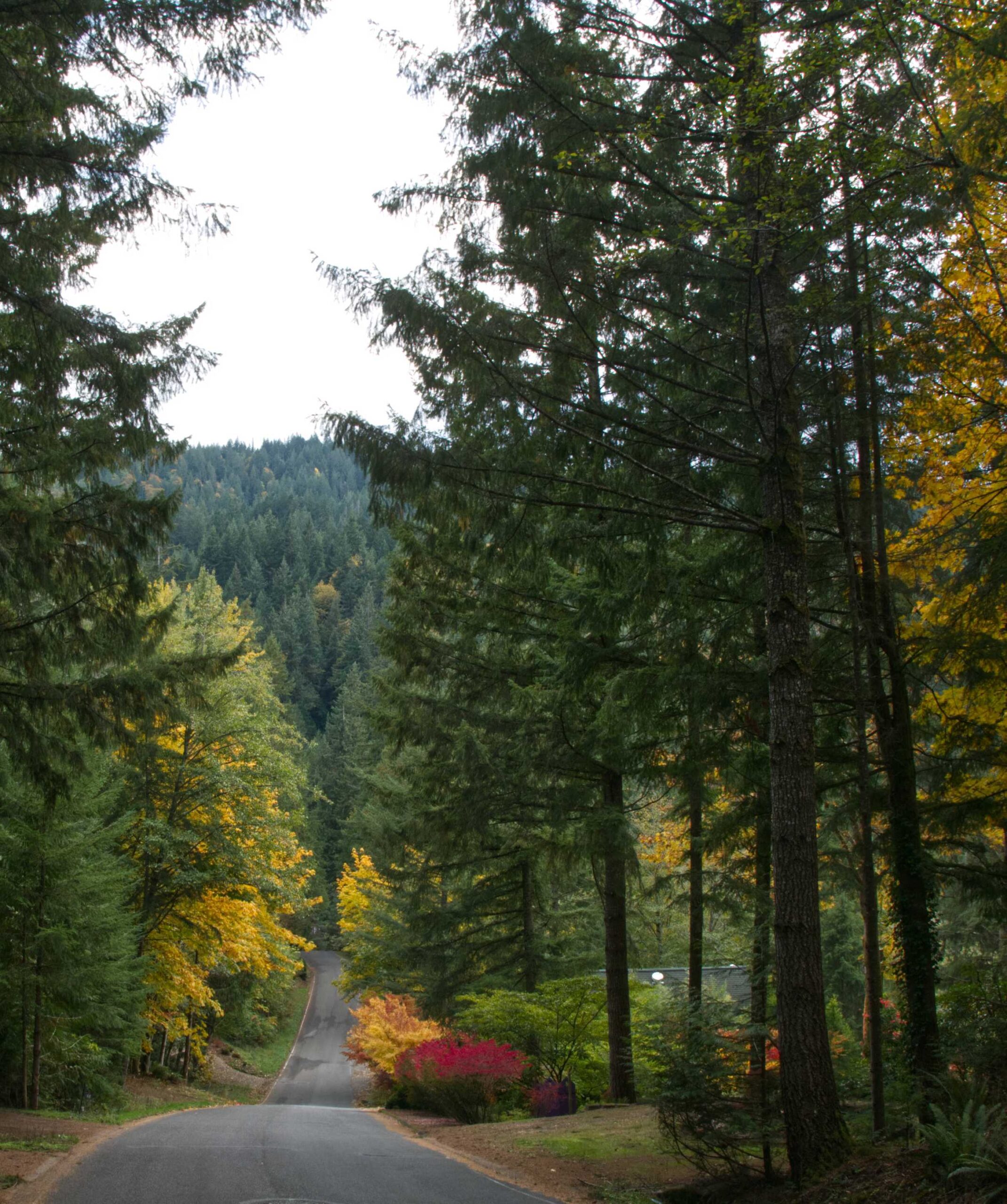
Then it stops at the bottom, our driveway. As does all the dirt and gravel washed down by heavy rainstorms. I hadn’t anticipated that. The solution, it happens, was to add more gravel and reserve part of the front yard for a parking space.
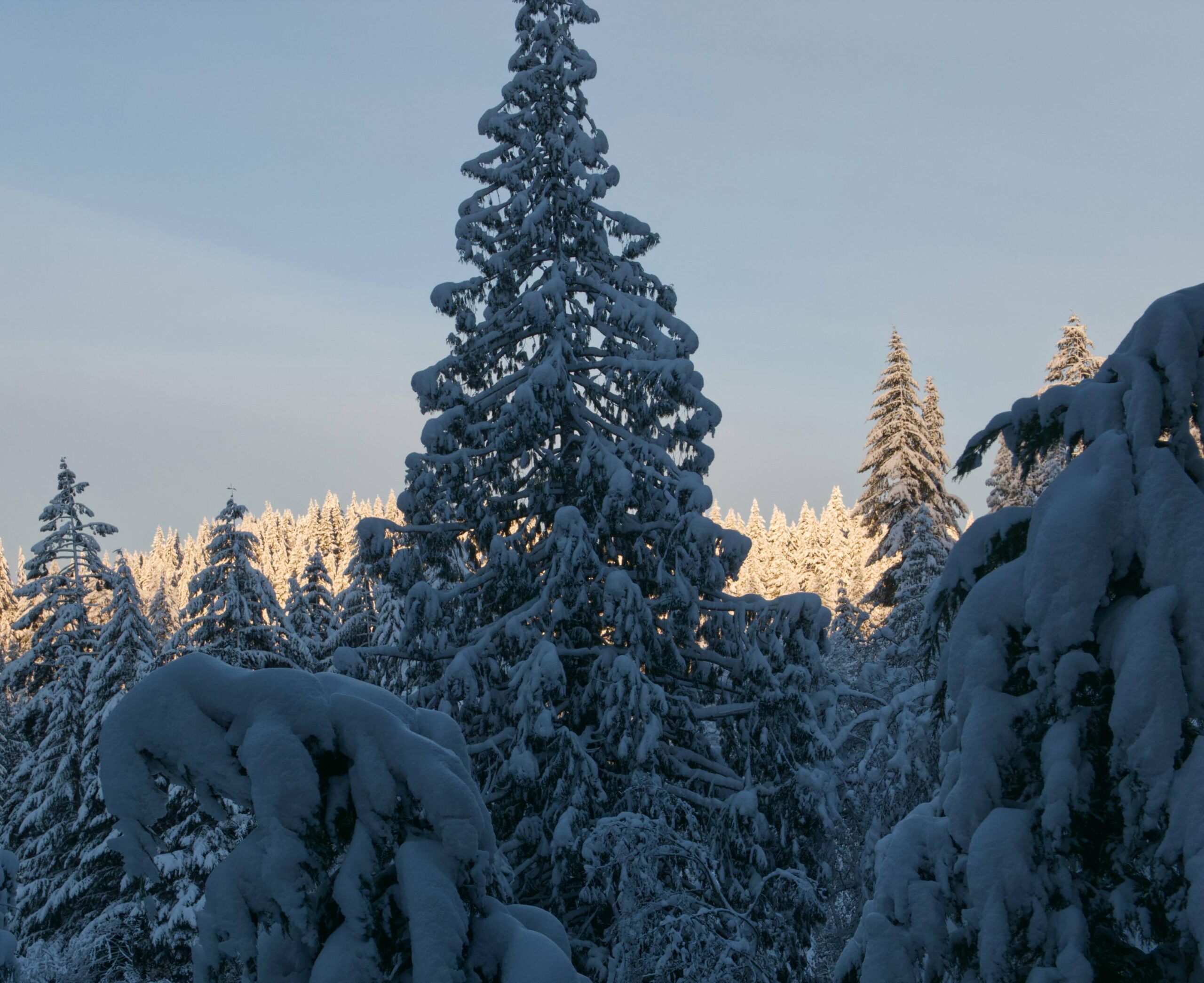
The local chorus of long-term residents all chanted the same line: winters are mild, and it seldom snows (which they also said about the rainstorms). December 25, 2021: This surprise kept us snowed in for nine days while the temperatures hovered around -7C.
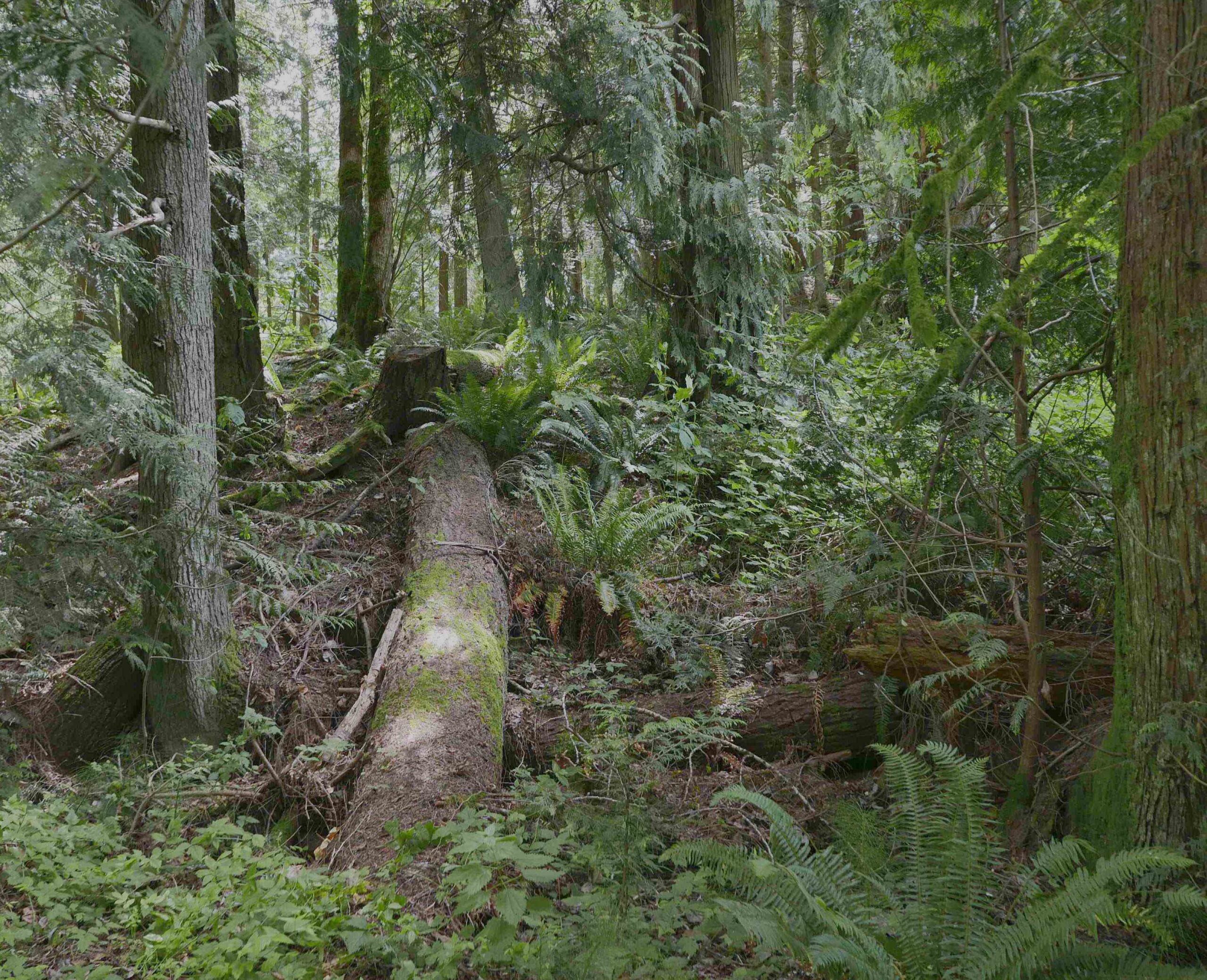
For the past two decades, property owners here took the attitude: ‘Throw it into the forest. It’ll be good mulch’. As Sir David points out, fire is also part of the natural progression of a forest. With climate change, summer is now drier, and some mornings, we smell smoke from Canadian forest fires.
A present-day property owner’s job is to clear fallen branches, trees and all the leaf litter. This patch of our yard took about two months to clear; we wanted to maintain the basic structure but clear anything that might support a fire. Perhaps we’ll put in some benches, one near a stream; make a forest grotto. Spouse wants Japanese stone lanterns and a Buddha or two.
Like anything worth having, it’s hard work. But the area is very beautiful.
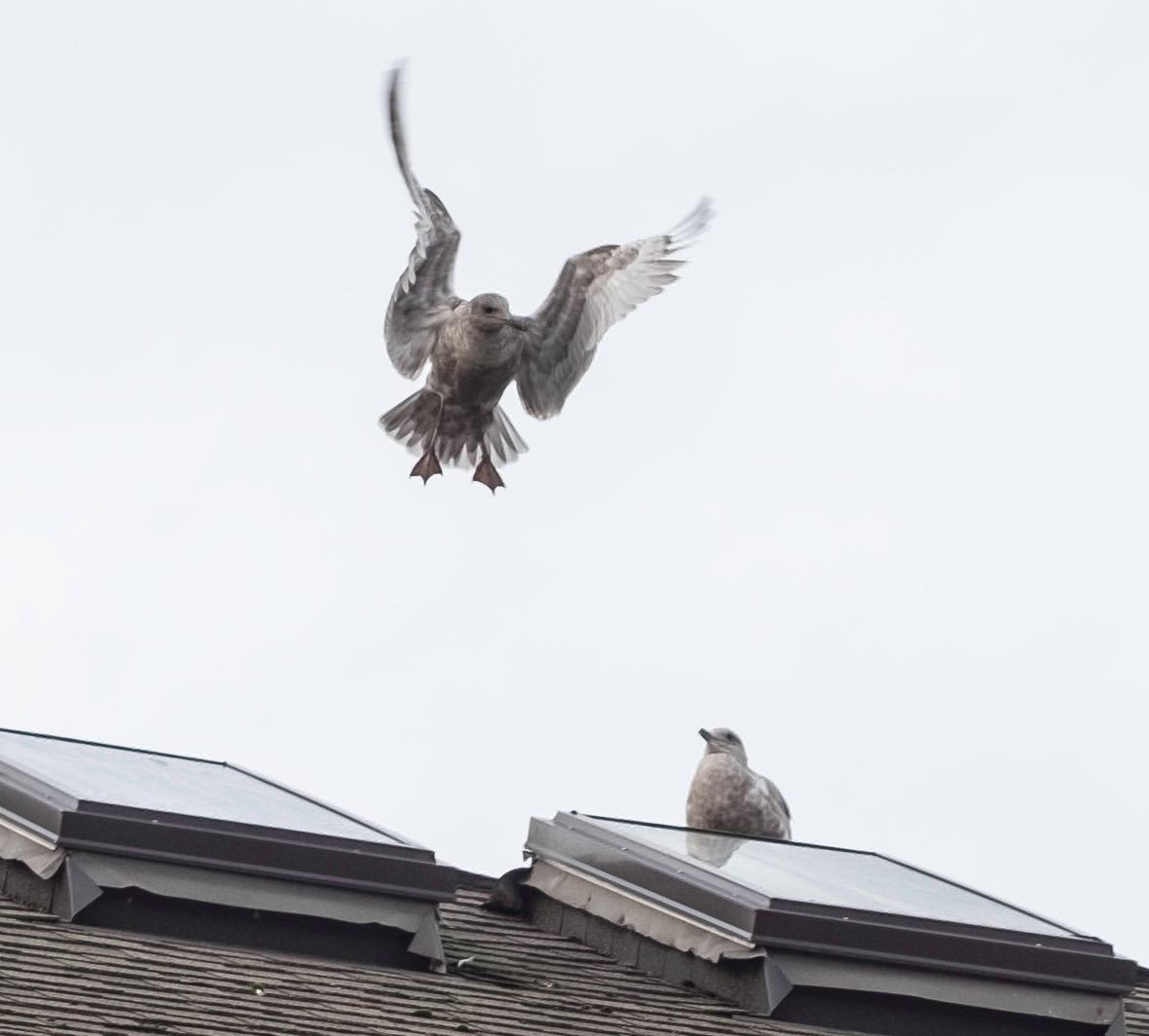
And eventually, with practice, I may get up there…
Read more from Kathy Davis
Join the Macfilos subscriber mailing list
Our thrice-a-week email service has been polished up and improved. Why not subscribe, using the button below to add yourself to the mailing list? You will never miss a Macfilos post again. Emails are sent on Mondays, Wednesdays, and Fridays at 8 pm GMT. Macfilos is a non-commercial site and your address will be used only for communications from the editorial team. We will never sell or allow third parties to use the list. Furthermore, you can unsubscribe at any time simply by clicking a button on any email.

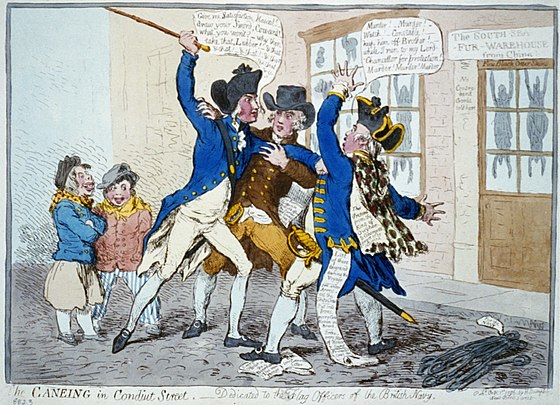
Hey, Keith! Thanks for getting in touch. I won’t warn you about wildfires; I think you might have enough of your own. But there’s a tough decision to make: when to visit.
Spring and Summer are very pleasant, but they’re also the height of the tourist season, when cruise ships unload thousands of passengers. On the other hand, Autumn and Winter are typically cold and rainy.
In either time, there’s beauty and fun to be had.
Best,
Kathy
Hi Kathy, thank you for your lovely photo-essay. I live on the West Coast (San Diego) and having heard so much about it, am hoping to make a trip north to Vancouver some time next year. Your photos gave a real flavor of the area. I will definitely pack my raincoat! All the best, Keith
Thanks Kathy for a great set of images and articles. I really appreciate the way you simply record the world around you. It feels natural. I’m following the northcoast photographer on flickr who takes landscape of your area. You live a truly beautiful place.
My only acquaintance with the area is limited to David Guterson’s novel “snow falling on cedars” and its cinema adaptation by Scott Hicks. His images of fogs, forests, beaches and snow were spectacular.
Is it a common great northern diver at the bottom right of the image entitled incoming, deception pass?
Looking forward to your next article
Jean
Jean,
Thank you for your thoughts on this post. I’ve just downloaded ‘Snow Falling On..’; it seems I’m learning the language of fogs.
I post here with some trepidation; MACFILOS has has so wide a group of sophisticated photographers. I’ve been thinking recently about why I photograph and what I’m trying to do. Your comment on ‘natural’ has given me much more to think about.
I’m not sure about the waterfowl in the deception pass photo: I was shooting a summicron 50mm and there wasn’t much detail! Also, Spouse was the one with the binoculars. More seriously — we’ve bought our birding books, and are working through what we see. The most exciting sight over our local lake was – just once – a bald eagle.
Regards,
Kathy
Hi Kathy,
I enjoyed this very much as it took me back to the months I lived in Vancouver whilst a student at Regent College on the UBC campus. Visits to Mount Baker, Victoria and of course walks around Stanley Park included. And to visit a friend in Seattle beforehand.
Good luck with the grey skies, we experience them here in England! Good for photography though. Bill Bryson described living in the UK as living inside a Tupperware box – or something to that effect.
Kevin
Dear Kevin,
I’m glad my article brought back good memories of PNW. Were you at UBC Point Grey? The setting, overlooking the bay and a ring of mountaiins — surely must make UBC one of the most beautiful in the world.
We do share English climate — and cost of living. Still — ealy in our first visit, we watched the rain coming down and decided: let’s ignore the weather. It’s far too beautiful, there’s too much to see and do.
Regards,
Kathy
Hi Kathy,
Yes, at Point Grey on Westbrook Mall. Kevin
When the sun comes out it’s spectacular.
Thank you. I did have qualms about posting the kitsch photo of the birds. I thought it might bring a laugh, though.
We were completely unprepared for the view of the volcanic mountains Ranier and Baker. They dominate the landscape like gods. When the sun comes out 🙂
Thanks Kathy, very nice article and pictures
Thanks for the very kind post. I have to give credit to our editor, who helped straighten out some errors on matters nautical!
A memorable photo essay. One of the best I’ve seen.
Kathy
Welcome to the Pacific Northwest. We are neighbors (Bremerton, WA here).
My small bits of advice are:
Give the PNW at least 1.5-2 years to really get to know how the annual weather cycles (grey skies) affect you. Coming from a sunny place the grey can affect you over time.
Wander and photograph as much as you can. There is a lot to see and enjoy.
Paul,
Thanks for the tip. Last year it was floods ; this year seems to be dry but cool. I’ll learn to take it in stride.